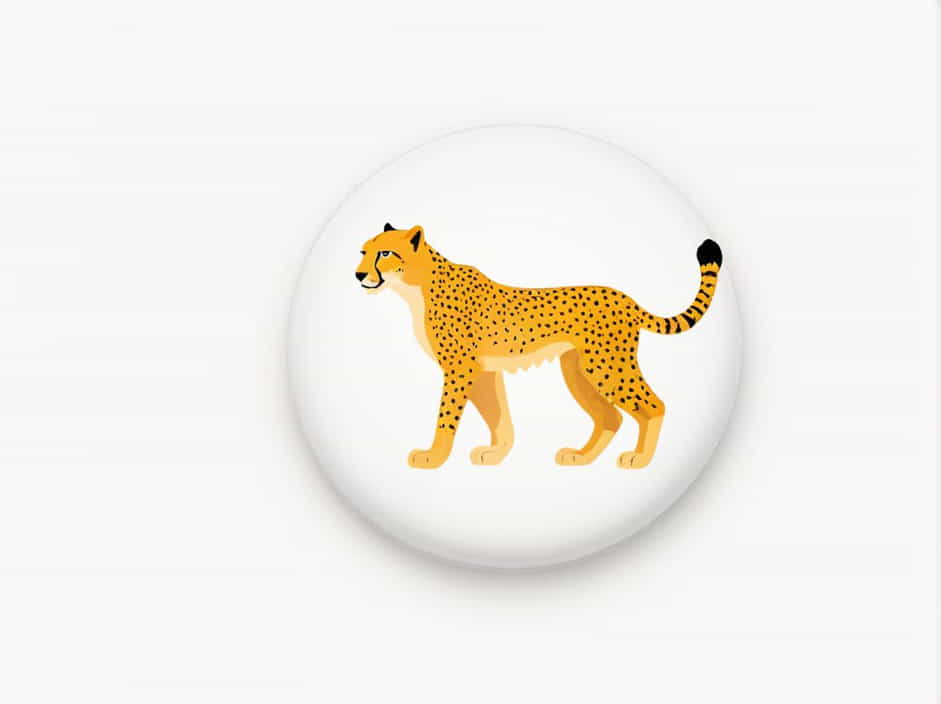Cheetahs, the world’s fastest land animals, have made a historic return to India after decades of extinction in the country. Kuno National Park in Madhya Pradesh has become the center of this ambitious conservation project, where African cheetahs have been introduced to re-establish their presence.
But how many cheetahs are in Kuno National Park today? What challenges do they face? And what does the future hold for their survival in India? This topic explores the current population of cheetahs in Kuno National Park, the efforts to sustain them, and their role in India’s wildlife ecosystem.
1. How Many Cheetahs Are in Kuno National Park?
Cheetah Reintroduction Program
In September 2022, India welcomed the first batch of eight African cheetahs from Namibia as part of the Cheetah Reintroduction Project. In early 2023, 12 more cheetahs arrived from South Africa, bringing the total introduced population to 20 cheetahs.
However, due to natural causes and territorial challenges, some cheetahs did not survive. As of 2024, the number of surviving cheetahs in Kuno National Park is around 15, including cubs born in the wild.
Birth of Cheetah Cubs
One of the most promising signs of success has been the birth of cubs in Kuno National Park. A female cheetah named Siyaya (later renamed Jwala) gave birth to four cubs in March 2023. This milestone was a major victory, proving that the reintroduced cheetahs could adapt to their new environment.
With the new cubs, the cheetah population in Kuno National Park continues to fluctuate, as conservationists monitor their growth and survival.
2. Why Were Cheetahs Reintroduced in Kuno National Park?
Historical Extinction in India
Cheetahs once roamed freely across India, but due to hunting, habitat loss, and poaching, they were declared extinct in 1952. The last recorded wild cheetah in India was shot in the 1940s.
To revive this lost species, the Indian government partnered with wildlife experts and African nations to bring cheetahs back to their natural habitat.
Why Kuno National Park?
✔️ Suitable Grassland Habitat – Kuno’s landscape is ideal for cheetahs, with open plains and minimal human interference.
✔️ Rich Prey Population – Deer, antelope, and other herbivores provide an adequate food source.
✔️ Large Protected Area – The park covers over 748 sq km, giving cheetahs enough space to hunt and establish territories.
Kuno was chosen after careful studies to ensure it could support a healthy cheetah population.
3. Challenges Faced by Cheetahs in Kuno
1. High Mortality Rate
Despite careful planning, the reintroduction program has faced difficulties. Some cheetahs have died due to:
✔️ Territorial Fights – Cheetahs are solitary animals, and conflicts over territory can be deadly.
✔️ Extreme Weather – Harsh summer temperatures in India pose challenges for cheetahs, who are adapted to African climates.
✔️ Prey Competition – While there is enough food, cheetahs compete with other predators like leopards.
2. Lack of Natural Corridors
Cheetahs require large home ranges, but Kuno is an enclosed area with limited space for expansion. Unlike Africa, where they roam across vast landscapes, Kuno’s boundaries restrict their movement.
To address this, conservationists are considering relocating some cheetahs to other parks in India to prevent overcrowding and ensure genetic diversity.
3. Human-Wildlife Conflict
As cheetahs adapt to their new home, there is a risk of human-wildlife conflict if they stray outside protected areas. Conservationists work closely with local communities to raise awareness and minimize potential conflicts.
4. Conservation Efforts to Protect Cheetahs
1. Monitoring and Tracking
Each cheetah is fitted with a radio collar to track their movements. This helps conservationists study their behavior, hunting patterns, and interactions with other wildlife.
✔️ GPS Technology – Helps in tracking cheetahs and ensuring they stay within safe zones.
✔️ 24/7 Surveillance – Wildlife officials monitor their health and safety daily.
2. Expanding Protected Areas
To prevent overpopulation in Kuno, experts suggest introducing cheetahs to new locations such as:
✔️ Gandhi Sagar Wildlife Sanctuary (Madhya Pradesh)
✔️ Nauradehi Wildlife Sanctuary (Madhya Pradesh)
✔️ Mukundra Hills (Rajasthan)
Expanding their habitat will increase survival chances and reduce stress on Kuno’s ecosystem.
3. Educating Local Communities
✔️ Anti-Poaching Measures – Strict enforcement against illegal hunting.
✔️ Community Involvement – Educating locals on the importance of cheetah conservation.
✔️ Eco-Tourism Initiatives – Encouraging responsible wildlife tourism to generate income for conservation efforts.
These steps help create a sustainable environment for both cheetahs and humans.
5. Future of Cheetahs in India
Short-Term Goals
✔️ Ensuring the survival of cubs born in Kuno
✔️ Preventing further losses due to conflicts and climate adaptation
✔️ Introducing more cheetahs to maintain genetic diversity
Long-Term Vision
The ultimate goal is to establish a self-sustaining population of cheetahs in India. By gradually increasing their numbers and ensuring they thrive in multiple locations, India hopes to restore its lost wildlife heritage.
The cheetah population in Kuno National Park represents a groundbreaking conservation effort. While challenges exist, the success of this project could mark the return of wild cheetahs to India after more than 70 years.
With continued monitoring, habitat expansion, and community support, the future looks promising for these incredible big cats. The dream is not just to maintain a few cheetahs in Kuno but to rebuild a thriving cheetah population across India.
